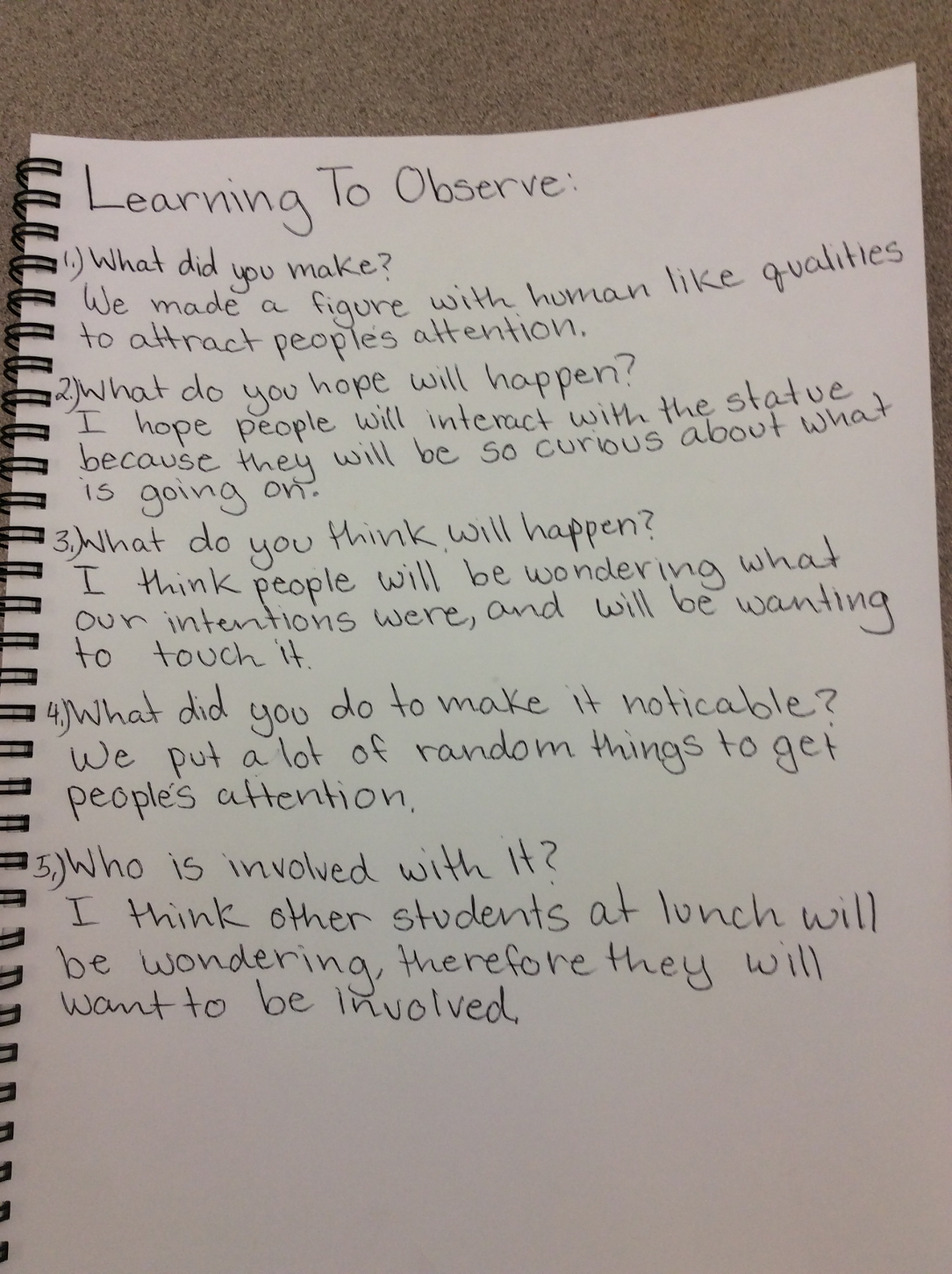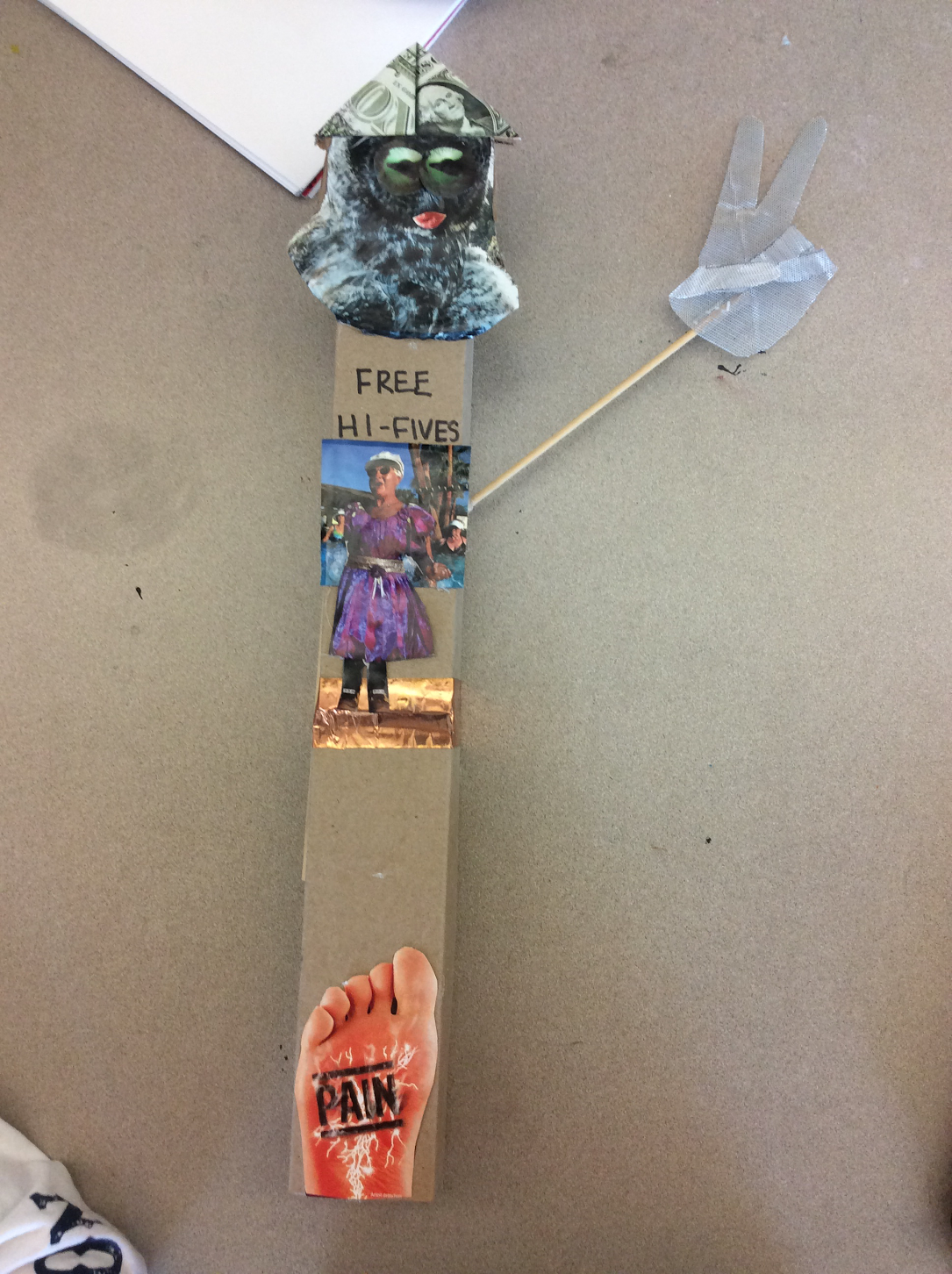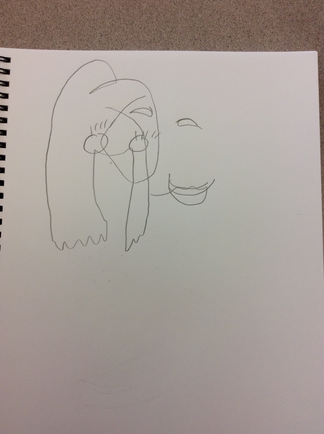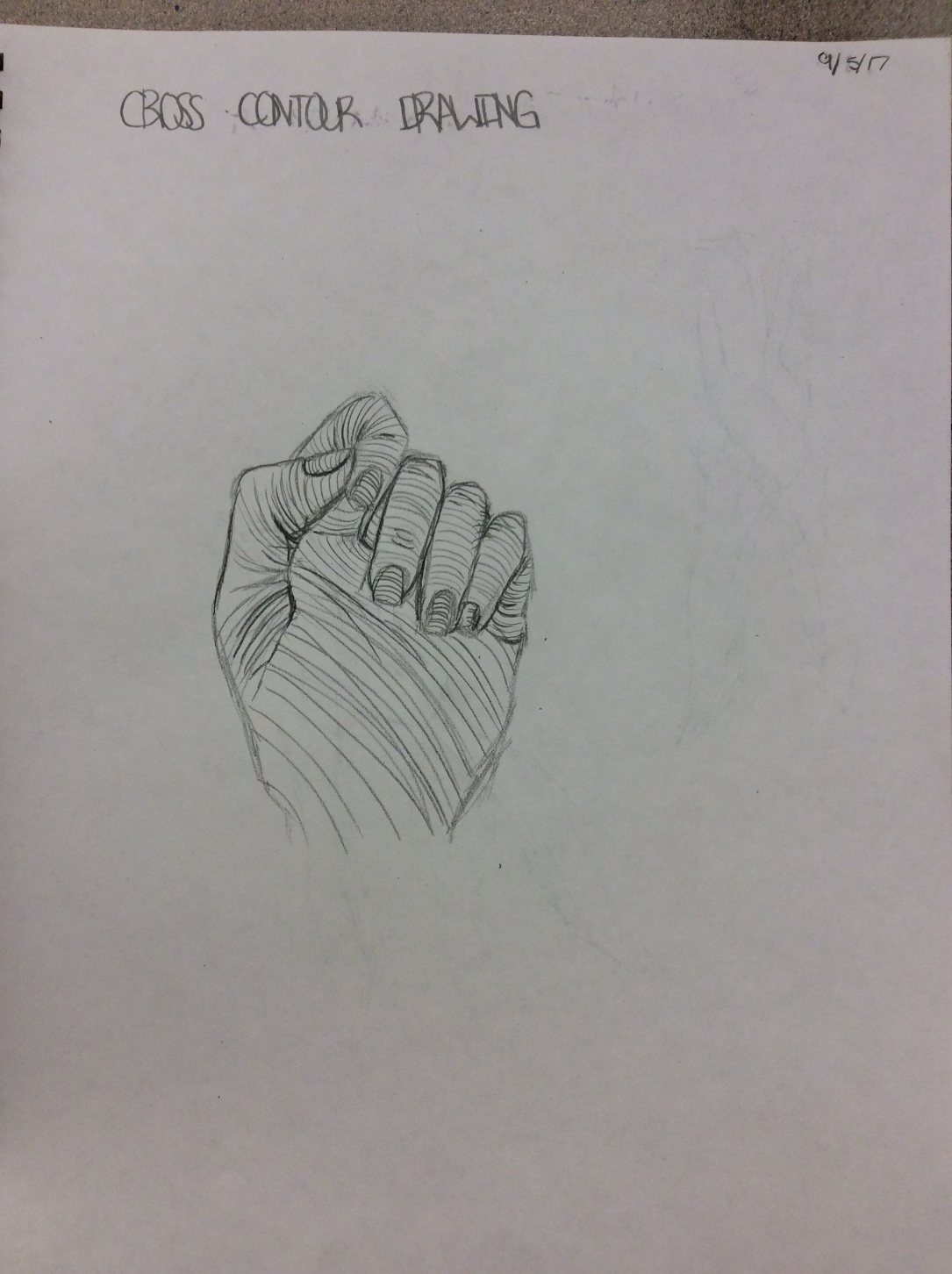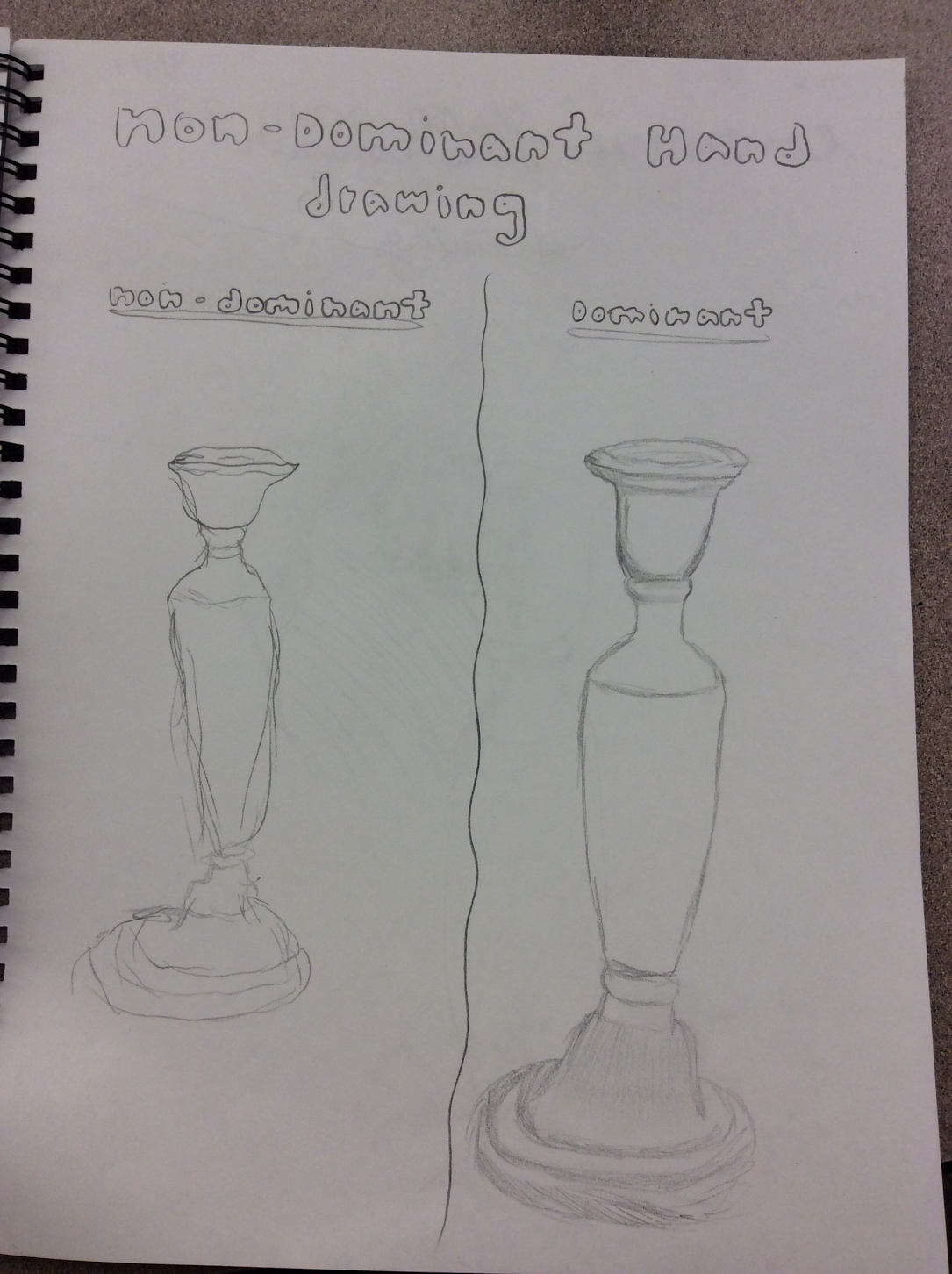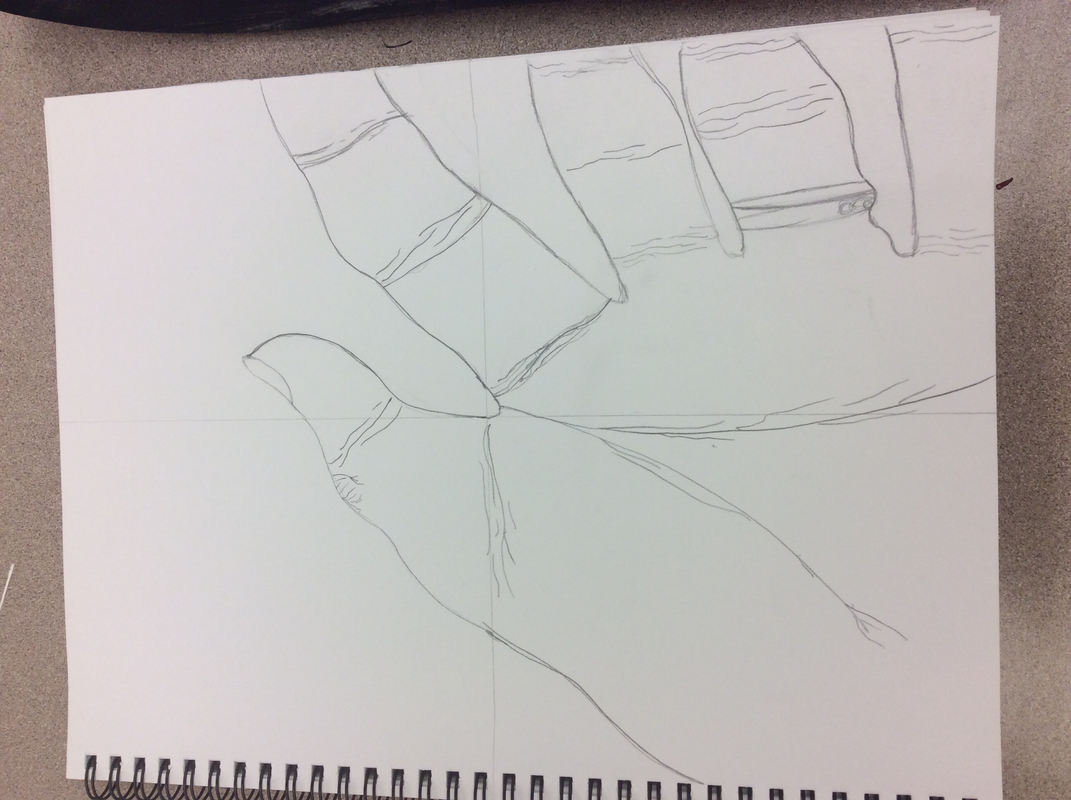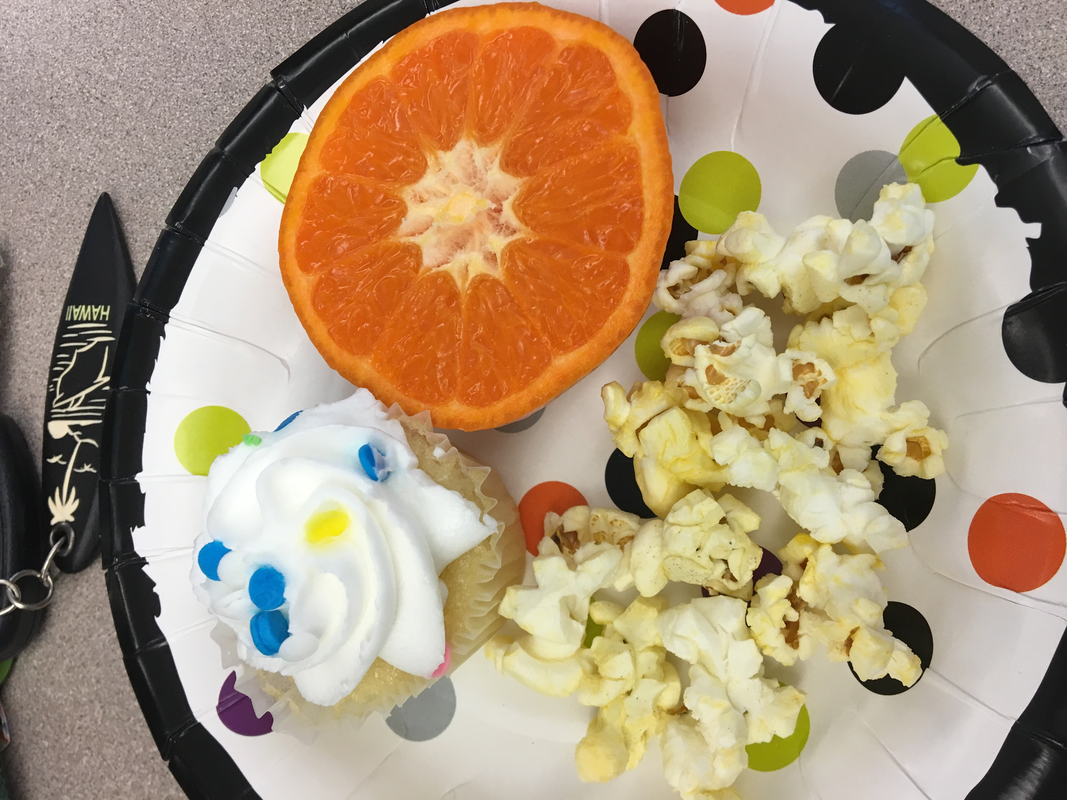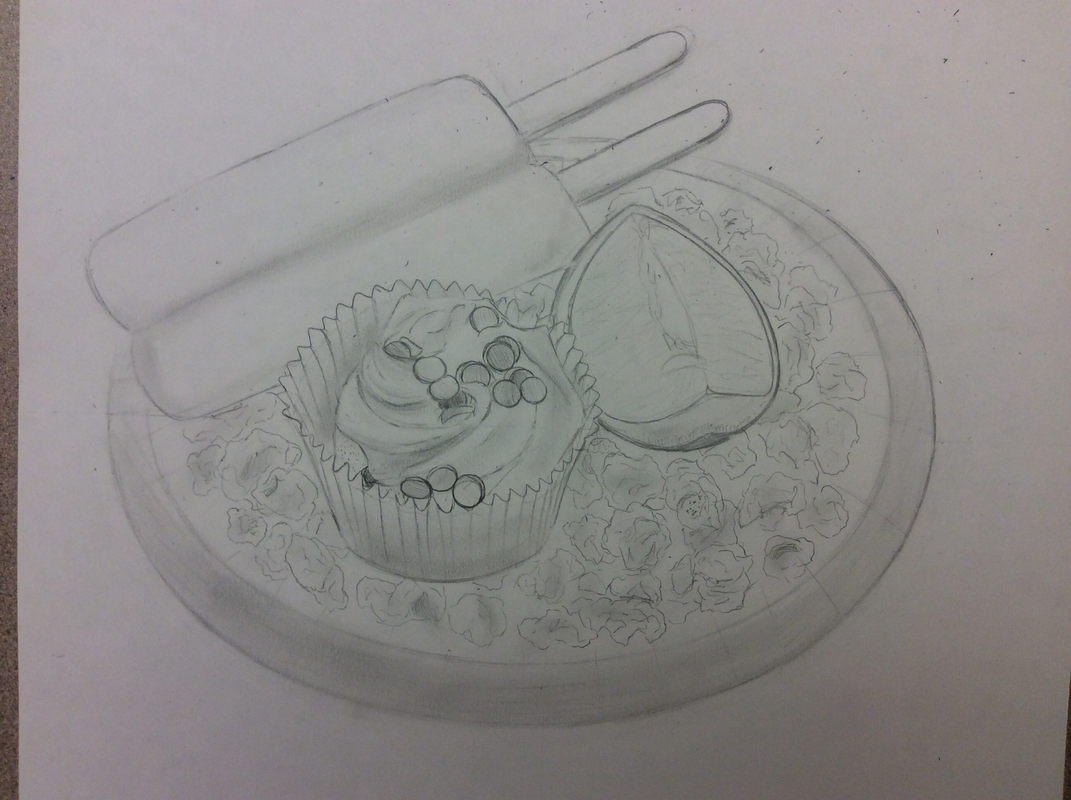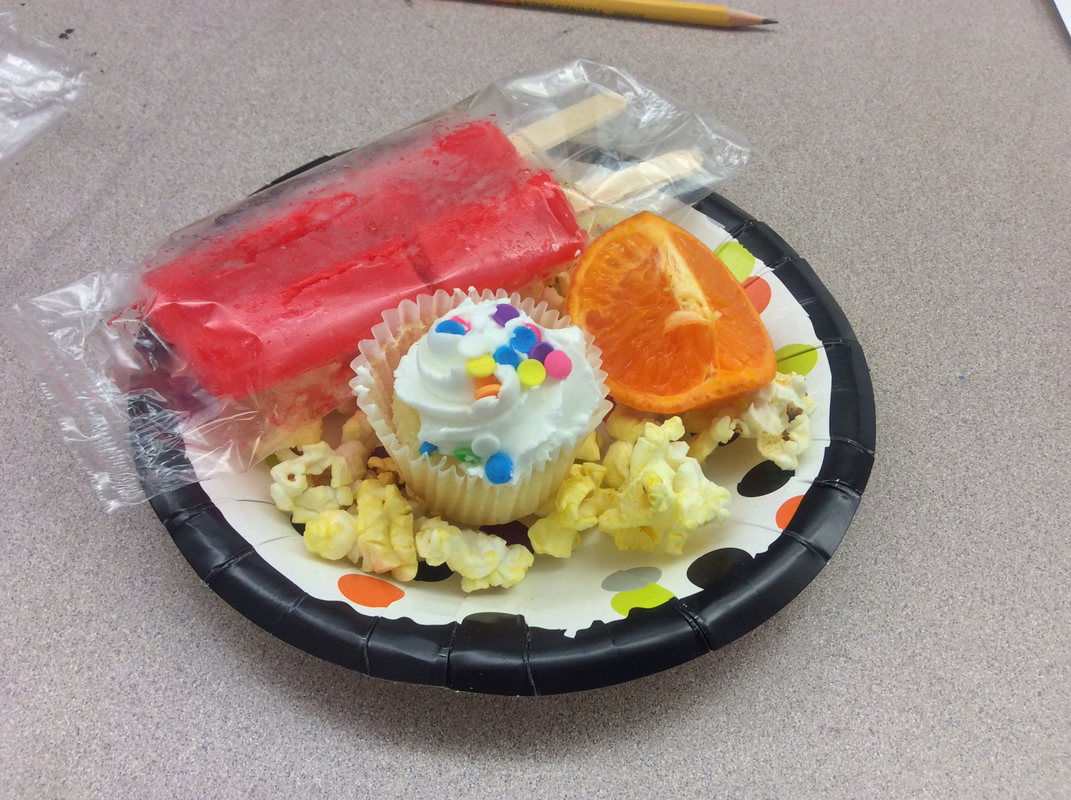Drawing from observation: The Stake out
In this unit of drawing we focus on the powers of observation. Artists observe, to create an expression of the world around them. Artists use observation to render realistic images, gain inspiration, or to wonder. In this unit we explore how observant the average person is, we will use our observational skills to draw what we see and not what we know. We will learn to bypass our pattern recognition and truly look at an object to see it. This was a multiple day lesson spanning approximately 10 days, not including assessment days. Below you will find the separate lesson plans for each portion of the lesson.
Drawing1 Lesson Title: Observational Drawing Grade: 9-12 Multi-day plan 1 of 8
Lesson Idea and Relevance: What are you going to teach and why is this lesson of importance to your students? How is it relevant to students of this age and background?
The power of observation is a transferable skill that can assist in all areas of life, work and art. Teaching observation and how to draw from observation is an important skill for learners of this age group. There is a tendency to draw with a desire for reality at this developmental stage. Giving them the tools they need to be successful is important in creating a life-long learner and creator.
Essential Understanding (s): What are the “big ideas”? What specific understandings about them are desired?
Artists Observe their surroundings for inspiration.
Artists use different techniques to create artwork that mimics reality.
Essential Question (s): What provocative questions will foster inquiry, understanding, and transfer of learning?
What is observation? How can artists use observation? What would happen to a piece of artwork if you left it in the lunchroom?
Outcomes - Students will know...What key knowledge and skills will students acquire as a result of this unit? ...Art history and culture; expressive features and characteristics of art; art materials, tools, and techniques? What should they eventually be able to do as a result of such knowledge and skill? ...Compare and contrast art work; analyze sketches?
Students will be able to:
Learners will be able to render objects from observation, using techniques of drawing and material knowledge.
Learners will be able to create, and use tools for observational drawing.
Learners will be able to create an imaginative object with the intent of gathering notice of the general public.
Learners will be able to gather, analyze and synthesize their observations in a meaningful way.
Assessment Instrument (s): By what criteria will “performances of understanding” be judged?
Self-assessment is a major portion of the modified choice platform. Learners will answer questions related to artistic process: materials & techniques, craftsmanship, invention and effort. Based on their answers they will assign themselves a grade.
Student Reflective Activity: Through what authentic performance task(s) will students demonstrate the desired understandings? How will students reflect upon and self-assess their learning?
Learners will be reflecting at several points throughout the multi day lesson. Each day will provide opportunities for small group or partner reflections. Personal and artistic reflection is a major part of the art making process.
Learners will demonstrate the understandings through multiple one day works. Learners will, at the end of the unit, create a single work of art that showcases all understandings earned from observation, techniques and material explorations. Learners will also complete a formal reflection and self-assessment process.
Ideation: How will you equip students, help them experience the key ideas, and explore the issues to generate ideas for their art work?
Learners will be encouraged to create an object that would make them stop and look at it, with the goal that they will get others to stop look and interact.
Motivation: How will you hook all students and hold their interest?
Has anyone heard the term stake out before? What does that mean? How does it apply to art and what we are doing here?
Kinetic learning
Pre-assessment: How will you help the students know where the unit is going and what is expected? Help the teacher know where the students are coming from (prior knowledge, interests)?
Pre-assessment will be accomplished through inquiry questions and role playing. Students will participate in a observational exercise prior to beginning the drawing portion of the unit.
“Stake out” consists of a short video about curiosity, observation, scientific method and finding out just what it takes for people to notice things.
Materials, Resources, Safety: What is needed to complete the learning plan?
Google Classroom- class site
Video- “Stake out”
All supplies-no limit
Conversation with campus supervisors
Ground rules for experiment
Explanation of experiment
Two days’ time
Reflection questions specific to event
Instruction: What content knowledge (know) and skills (do) will be taught for students to be successful in this art experience? Provide opportunities to rethink and revise their understandings and work? Allow students to evaluate their work and its implications? (Understand) Include literacy and numeracy?
Day of introduction and object creating (Day 1)
· Show video about art stalkers the Stake out! (Interactive)
· Talk about the principles discussed (Teacher led/ interactive)
· Intro to object creation and hypothesis (Teacher led)
o Work time- collaborative project (Student led)
Day of Observation (day 2)
Have them check in and take attendance. (TL)
Pull up the rules of engagement and observation. (TL)
· Observe objects in lunchroom setting- check in to 11:10 (SL)
· Observe until 11:10
· respond to their observation. (SL)
o Either with a paragraph of 8-10 sentences.
o Or a comic strip of 8 cells.
o Effort is expected.
§ Demo how to draw quick figures- focus on interesting (TL)
· 10minute reflective response (SL)
· “As Artists we practice being observant everyday. It plays a key role in how we are inspired.”
· Introduce Contours and connection to Observation (TL)
· Demo blind contour (TL/ Interactive)
o 8 min blind contour draw (TL)
o 10 min contour (SL)
o 10 min object contour (SL)
o 10 min partner contour (SL)
· Upload all contours and stake out to GC (SL)
Accommodations: How is the lesson tailored (personalized) to the different needs, interests, and abilities of learners? ...Access (Resources and/or Process) and Expression (Products and/or Performance)?
Learners will be encouraged to work in groups to accomplish their experiment. This will allow different learners to work to their strengths.
Artists use elements of art and expressive features to effectively communicate their ideas.
(VA1.1, VA 1.3, VA 2.3, VA 3.1, VA 4.3; PGC: Make informed critical evaluations of visual and material culture, information, and technologies, GLE: 1.1 Visual art has inherent characteristics and expressive features; 2.3 Interpretation is a means for understanding and evaluating works of art; 3.1 Demonstrate competency in traditional and new art media, and apply appropriate and available technology for the expression of ideas; 4.3 Art is a lifelong endeavor)
Lesson Idea and Relevance: What are you going to teach and why is this lesson of importance to your students? How is it relevant to students of this age and background?
The power of observation is a transferable skill that can assist in all areas of life, work and art. Teaching observation and how to draw from observation is an important skill for learners of this age group. There is a tendency to draw with a desire for reality at this developmental stage. Giving them the tools they need to be successful is important in creating a life-long learner and creator.
Essential Understanding (s): What are the “big ideas”? What specific understandings about them are desired?
Artists Observe their surroundings for inspiration.
Artists use different techniques to create artwork that mimics reality.
Essential Question (s): What provocative questions will foster inquiry, understanding, and transfer of learning?
What is observation? How can artists use observation? What would happen to a piece of artwork if you left it in the lunchroom?
Outcomes - Students will know...What key knowledge and skills will students acquire as a result of this unit? ...Art history and culture; expressive features and characteristics of art; art materials, tools, and techniques? What should they eventually be able to do as a result of such knowledge and skill? ...Compare and contrast art work; analyze sketches?
Students will be able to:
Learners will be able to render objects from observation, using techniques of drawing and material knowledge.
Learners will be able to create, and use tools for observational drawing.
Learners will be able to create an imaginative object with the intent of gathering notice of the general public.
Learners will be able to gather, analyze and synthesize their observations in a meaningful way.
Assessment Instrument (s): By what criteria will “performances of understanding” be judged?
Self-assessment is a major portion of the modified choice platform. Learners will answer questions related to artistic process: materials & techniques, craftsmanship, invention and effort. Based on their answers they will assign themselves a grade.
Student Reflective Activity: Through what authentic performance task(s) will students demonstrate the desired understandings? How will students reflect upon and self-assess their learning?
Learners will be reflecting at several points throughout the multi day lesson. Each day will provide opportunities for small group or partner reflections. Personal and artistic reflection is a major part of the art making process.
Learners will demonstrate the understandings through multiple one day works. Learners will, at the end of the unit, create a single work of art that showcases all understandings earned from observation, techniques and material explorations. Learners will also complete a formal reflection and self-assessment process.
Ideation: How will you equip students, help them experience the key ideas, and explore the issues to generate ideas for their art work?
Learners will be encouraged to create an object that would make them stop and look at it, with the goal that they will get others to stop look and interact.
Motivation: How will you hook all students and hold their interest?
Has anyone heard the term stake out before? What does that mean? How does it apply to art and what we are doing here?
Kinetic learning
Pre-assessment: How will you help the students know where the unit is going and what is expected? Help the teacher know where the students are coming from (prior knowledge, interests)?
Pre-assessment will be accomplished through inquiry questions and role playing. Students will participate in a observational exercise prior to beginning the drawing portion of the unit.
“Stake out” consists of a short video about curiosity, observation, scientific method and finding out just what it takes for people to notice things.
Materials, Resources, Safety: What is needed to complete the learning plan?
Google Classroom- class site
Video- “Stake out”
All supplies-no limit
Conversation with campus supervisors
Ground rules for experiment
Explanation of experiment
Two days’ time
Reflection questions specific to event
Instruction: What content knowledge (know) and skills (do) will be taught for students to be successful in this art experience? Provide opportunities to rethink and revise their understandings and work? Allow students to evaluate their work and its implications? (Understand) Include literacy and numeracy?
Day of introduction and object creating (Day 1)
· Show video about art stalkers the Stake out! (Interactive)
· Talk about the principles discussed (Teacher led/ interactive)
· Intro to object creation and hypothesis (Teacher led)
o Work time- collaborative project (Student led)
Day of Observation (day 2)
Have them check in and take attendance. (TL)
Pull up the rules of engagement and observation. (TL)
· Observe objects in lunchroom setting- check in to 11:10 (SL)
· Observe until 11:10
· respond to their observation. (SL)
o Either with a paragraph of 8-10 sentences.
o Or a comic strip of 8 cells.
o Effort is expected.
§ Demo how to draw quick figures- focus on interesting (TL)
· 10minute reflective response (SL)
· “As Artists we practice being observant everyday. It plays a key role in how we are inspired.”
· Introduce Contours and connection to Observation (TL)
· Demo blind contour (TL/ Interactive)
o 8 min blind contour draw (TL)
o 10 min contour (SL)
o 10 min object contour (SL)
o 10 min partner contour (SL)
· Upload all contours and stake out to GC (SL)
Accommodations: How is the lesson tailored (personalized) to the different needs, interests, and abilities of learners? ...Access (Resources and/or Process) and Expression (Products and/or Performance)?
Learners will be encouraged to work in groups to accomplish their experiment. This will allow different learners to work to their strengths.
Artists use elements of art and expressive features to effectively communicate their ideas.
(VA1.1, VA 1.3, VA 2.3, VA 3.1, VA 4.3; PGC: Make informed critical evaluations of visual and material culture, information, and technologies, GLE: 1.1 Visual art has inherent characteristics and expressive features; 2.3 Interpretation is a means for understanding and evaluating works of art; 3.1 Demonstrate competency in traditional and new art media, and apply appropriate and available technology for the expression of ideas; 4.3 Art is a lifelong endeavor)
Drawing1 Lesson Title: Observational Drawing Grade: 9-12 Multi-day plan 2 of 8
Lesson Idea and Relevance: What are you going to teach and why is this lesson of importance to your students? How is it relevant to students of this age and background?
The power of observation is a transferable skill that can assist in all areas of life, work and art. Teaching observation and how to draw from observation is an important skill for learners of this age group. There is a tendency to draw with a desire for reality at this developmental stage. Giving them the tools they need to be successful is important in creating a life-long learner and creator.
Essential Understanding (s): What are the “big ideas”? What specific understandings about them are desired?
Artists Observe their surroundings for inspiration.
Artists use different techniques to create artwork that mimics reality.
Essential Question (s): What provocative questions will foster inquiry, understanding, and transfer of learning?
What is observation? How can artists use observation? What would happen to a piece of artwork if you left it in the lunchroom?
What is a contour? How could we use contour in our work? What happens when we combine different ways of drawing in one work?
Outcomes - Students will know...What key knowledge and skills will students acquire as a result of this unit? ...Art history and culture; expressive features and characteristics of art; art materials, tools, and techniques? What should they eventually be able to do as a result of such knowledge and skill? ...Compare and contrast art work; analyze sketches?
Students will be able to:
Learners will be able to render objects from observation, using techniques of drawing and material knowledge.
Learners will be able to create, and use tools for observational drawing.
Learners will be able to create an imaginative object with the intent of gathering notice of the general public.
Learners will be able to gather, analyze and synthesize their observations in a meaningful way.
Assessment Instrument (s): By what criteria will “performances of understanding” be judged?
Self-assessment is a major portion of the modified choice platform. Learners will answer questions related to artistic process: materials & techniques, craftsmanship, invention and effort. Based on their answers they will assign themselves a grade.
Student Reflective Activity: Through what authentic performance task(s) will students demonstrate the desired understandings? How will students reflect upon and self-assess their learning?
Learners will be reflecting at several points throughout the multi day lesson. Each day will provide opportunities for small group or partner reflections. Personal and artistic reflection is a major part of the art making process.
Learners will demonstrate the understandings through multiple one day works. Learners will, at the end of the unit, create a single work of art that showcases all understandings earned from observation, techniques and material explorations. Learners will also complete a formal reflection and self-assessment process.
Ideation: How will you equip students, help them experience the key ideas, and explore the issues to generate ideas for their art work?
Learners will be encouraged to create an object that would make them stop and look at it, with the goal that they will get others to stop look and interact.
Learners will be observing their object and taking notes on its journey, they will use these observations to create either a writing or a short comic about the object’s journey.
Motivation: How will you hook all students and hold their interest?
Has anyone heard the term stake out before? What does that mean? How does it apply to art and what we are doing here?
Kinetic learning
Demo and humor- blind contours and contour drawing
Pre-assessment: How will you help the students know where the unit is going and what is expected? Help the teacher know where the students are coming from (prior knowledge, interests)?
Pre-assessment will be accomplished through inquiry questions and role playing. Students will participate in a observational exercise prior to beginning the drawing portion of the unit.
“Stake out” consists of a short video about curiosity, observation, scientific method and finding out just what it takes for people to notice things.
Materials, Resources, Safety: What is needed to complete the learning plan?
Google Classroom- class site
Video- “Stake out”
All supplies-no limit
Conversation with campus supervisors
Ground rules for experiment
Explanation of experiment
Two days’ time
Reflection questions specific to event
Contour Drawing:
Paper
Pens Pencils
Objects of interest
Timer
Right brain left brain video
Weblink to RBLB test
Instruction: What content knowledge (know) and skills (do) will be taught for students to be successful in this art experience? Provide opportunities to rethink and revise their understandings and work? Allow students to evaluate their work and its implications? (Understand) Include literacy and numeracy?
Day of introduction and object creating (Day 1)
· Show video about art stalkers the Stake out!
· Talk about the principles discussed
· Intro to object creation and hypothesis
o Work time- collaborative project
Day of Observation (day 2)
Have them check in and take attendance.
Pull up the rules of engagement and observation.
· Observe objects in lunchroom setting- check in to 11:10
· Observe until 11:10
· respond to their observation.
o Either with a paragraph of 8-10 sentences.
o Or a comic strip of 8 cells.
o Explain that this being an art class stick figures are not acceptable-
§ Demo how to draw quick figures- focus on interesting
· 10minute reflective response
· “As Artists we practice being observant everyday. It plays a key role in how we are inspired.”
· Introduce Contours and connection to Observation
· Demo blind contour
o 8 min blind contour draw
o 10 min contour
o 10 min object contour
o 10 min partner contour
· Upload all contours and stake out to GC
Accommodations: How is the lesson tailored (personalized) to the different needs, interests, and abilities of learners? ...Access (Resources and/or Process) and Expression (Products and/or Performance)?
Learners will be encouraged to work in groups to accomplish their experiment. This will allow different learners to work to their strengths.
Artists use elements of art and expressive features to effectively communicate their ideas.
(VA1.1, VA 1.3, VA 2.3, VA 3.1, VA 4.3; PGC: Make informed critical evaluations of visual and material culture, information, and technologies, GLE: 1.1 Visual art has inherent characteristics and expressive features; 2.3 Interpretation is a means for understanding and evaluating works of art; 3.1 Demonstrate competency in traditional and new art media, and apply appropriate and available technology for the expression of ideas; 4.3 Art is a lifelong endeavor)
Lesson Idea and Relevance: What are you going to teach and why is this lesson of importance to your students? How is it relevant to students of this age and background?
The power of observation is a transferable skill that can assist in all areas of life, work and art. Teaching observation and how to draw from observation is an important skill for learners of this age group. There is a tendency to draw with a desire for reality at this developmental stage. Giving them the tools they need to be successful is important in creating a life-long learner and creator.
Essential Understanding (s): What are the “big ideas”? What specific understandings about them are desired?
Artists Observe their surroundings for inspiration.
Artists use different techniques to create artwork that mimics reality.
Essential Question (s): What provocative questions will foster inquiry, understanding, and transfer of learning?
What is observation? How can artists use observation? What would happen to a piece of artwork if you left it in the lunchroom?
What is a contour? How could we use contour in our work? What happens when we combine different ways of drawing in one work?
Outcomes - Students will know...What key knowledge and skills will students acquire as a result of this unit? ...Art history and culture; expressive features and characteristics of art; art materials, tools, and techniques? What should they eventually be able to do as a result of such knowledge and skill? ...Compare and contrast art work; analyze sketches?
Students will be able to:
Learners will be able to render objects from observation, using techniques of drawing and material knowledge.
Learners will be able to create, and use tools for observational drawing.
Learners will be able to create an imaginative object with the intent of gathering notice of the general public.
Learners will be able to gather, analyze and synthesize their observations in a meaningful way.
Assessment Instrument (s): By what criteria will “performances of understanding” be judged?
Self-assessment is a major portion of the modified choice platform. Learners will answer questions related to artistic process: materials & techniques, craftsmanship, invention and effort. Based on their answers they will assign themselves a grade.
Student Reflective Activity: Through what authentic performance task(s) will students demonstrate the desired understandings? How will students reflect upon and self-assess their learning?
Learners will be reflecting at several points throughout the multi day lesson. Each day will provide opportunities for small group or partner reflections. Personal and artistic reflection is a major part of the art making process.
Learners will demonstrate the understandings through multiple one day works. Learners will, at the end of the unit, create a single work of art that showcases all understandings earned from observation, techniques and material explorations. Learners will also complete a formal reflection and self-assessment process.
Ideation: How will you equip students, help them experience the key ideas, and explore the issues to generate ideas for their art work?
Learners will be encouraged to create an object that would make them stop and look at it, with the goal that they will get others to stop look and interact.
Learners will be observing their object and taking notes on its journey, they will use these observations to create either a writing or a short comic about the object’s journey.
Motivation: How will you hook all students and hold their interest?
Has anyone heard the term stake out before? What does that mean? How does it apply to art and what we are doing here?
Kinetic learning
Demo and humor- blind contours and contour drawing
Pre-assessment: How will you help the students know where the unit is going and what is expected? Help the teacher know where the students are coming from (prior knowledge, interests)?
Pre-assessment will be accomplished through inquiry questions and role playing. Students will participate in a observational exercise prior to beginning the drawing portion of the unit.
“Stake out” consists of a short video about curiosity, observation, scientific method and finding out just what it takes for people to notice things.
Materials, Resources, Safety: What is needed to complete the learning plan?
Google Classroom- class site
Video- “Stake out”
All supplies-no limit
Conversation with campus supervisors
Ground rules for experiment
Explanation of experiment
Two days’ time
Reflection questions specific to event
Contour Drawing:
Paper
Pens Pencils
Objects of interest
Timer
Right brain left brain video
Weblink to RBLB test
Instruction: What content knowledge (know) and skills (do) will be taught for students to be successful in this art experience? Provide opportunities to rethink and revise their understandings and work? Allow students to evaluate their work and its implications? (Understand) Include literacy and numeracy?
Day of introduction and object creating (Day 1)
· Show video about art stalkers the Stake out!
· Talk about the principles discussed
· Intro to object creation and hypothesis
o Work time- collaborative project
Day of Observation (day 2)
Have them check in and take attendance.
Pull up the rules of engagement and observation.
· Observe objects in lunchroom setting- check in to 11:10
· Observe until 11:10
· respond to their observation.
o Either with a paragraph of 8-10 sentences.
o Or a comic strip of 8 cells.
o Explain that this being an art class stick figures are not acceptable-
§ Demo how to draw quick figures- focus on interesting
· 10minute reflective response
· “As Artists we practice being observant everyday. It plays a key role in how we are inspired.”
· Introduce Contours and connection to Observation
· Demo blind contour
o 8 min blind contour draw
o 10 min contour
o 10 min object contour
o 10 min partner contour
· Upload all contours and stake out to GC
Accommodations: How is the lesson tailored (personalized) to the different needs, interests, and abilities of learners? ...Access (Resources and/or Process) and Expression (Products and/or Performance)?
Learners will be encouraged to work in groups to accomplish their experiment. This will allow different learners to work to their strengths.
Artists use elements of art and expressive features to effectively communicate their ideas.
(VA1.1, VA 1.3, VA 2.3, VA 3.1, VA 4.3; PGC: Make informed critical evaluations of visual and material culture, information, and technologies, GLE: 1.1 Visual art has inherent characteristics and expressive features; 2.3 Interpretation is a means for understanding and evaluating works of art; 3.1 Demonstrate competency in traditional and new art media, and apply appropriate and available technology for the expression of ideas; 4.3 Art is a lifelong endeavor)
Drawing exercises- observational techniques
| observational_drawing_day_3_and_4.docx | |
| File Size: | 38 kb |
| File Type: | docx |
| observational_drawing_day_5_and_6.docx | |
| File Size: | 38 kb |
| File Type: | docx |
| observational_drawing_day_7.docx | |
| File Size: | 41 kb |
| File Type: | docx |
| observational_drawing_day_8.docx | |
| File Size: | 40 kb |
| File Type: | docx |
